Rapa Nui: As an adventurer of lost times, go to discover the island of Easter and its fascinating statues.
Confetti of volcanic earth, rhymed by mysteries and legend prints, the island of Easter (Rapa Nui in Polynesian) calls those who thirst for adventure.
Rattachée Chile but deeply isolated 3,700 kilometres from the coast, this island is especially known for its giant statues: the Moai. These enigmatic stone giants, whose birth still raises questions, exercise a magnetic aura.
But it would be vain to summarize the island of Easter to these only stone giants. The island also offers vast soothing emerald expanses and waters of striking beauty. So, walking enthusiasts, cycling, marine landscapes, scuba diving and surfing are not left behind. Not to mention the culture of Pascuans (inhabitant of the island) that awakens curiosity and impresses immensely.
However, Easter Island is a privilege and it is not always obvious to know where to start when you dream of trying adventure. Backpack focused on our hips, we have travelled this almost naked territory and share our adventure today. After our story, we hope that you will have all the cards in hand to try, in your turn, this escape out of time.
Access to Easter Island is made by purchasing a ticket valued at $80 (about 70 euros). It is valid for 10 days and provides access to all sites on the island. They are visible several times, except for the ceremonial village of Orongo and the volcanic nursery of Rano Raraku.
The ticket can be purchased directly on the spot and is to be kept preciously with yourself throughout the stay. Finally, know that the sites are open from 8am to 8pm.
Environment and seasons
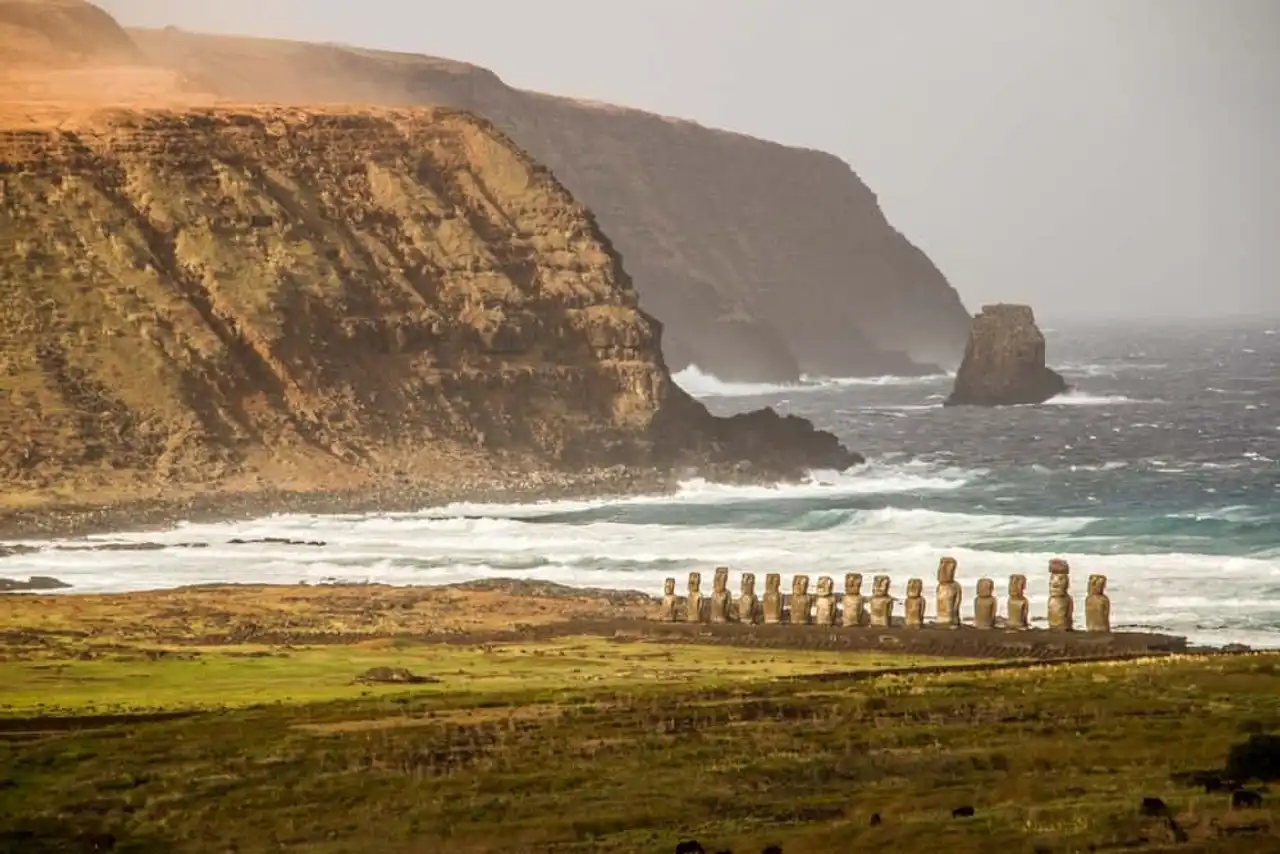
Find Easter Island Sky View – Easter Island Photo credit: Shutterstock- Oriol Querol
We look through the hublots of the coucou that brings us from Santiago de Chile in Hanga Roa, the only city on Easter Island. Already, our hearts are packed.
A triangle pierced by an extinct volcano: this is what jumps in the eyes when you fly over Easter Island. This small island, barely 24 kilometres long and 12 kilometres wide, is covered with grassy areas and fertile fields, hauled by the petrified lava castings. Trails in the middle of the wilderness, at the only sparkling white sand beach, the painting seems exceptional. The coastline, worked by erosion, and the long shredded cliffs draw under our eyes.
Isolated around the world, this island escapes the climatic rules we know. Compared to France, the seasons are reversed. The period from January to March therefore corresponds to the hot season. The accommodations are then stormed and prices rise, especially during the Rapa Nui Festival.
From July to September, temperatures cool down. It is more difficult to get into the water but the climate is ideal for hiking. The intermediate seasons, from April to June and from October to November, are a good compromise. Like a little paradise, Easter Island is finally visiting all seasons.
The story of Easter Island
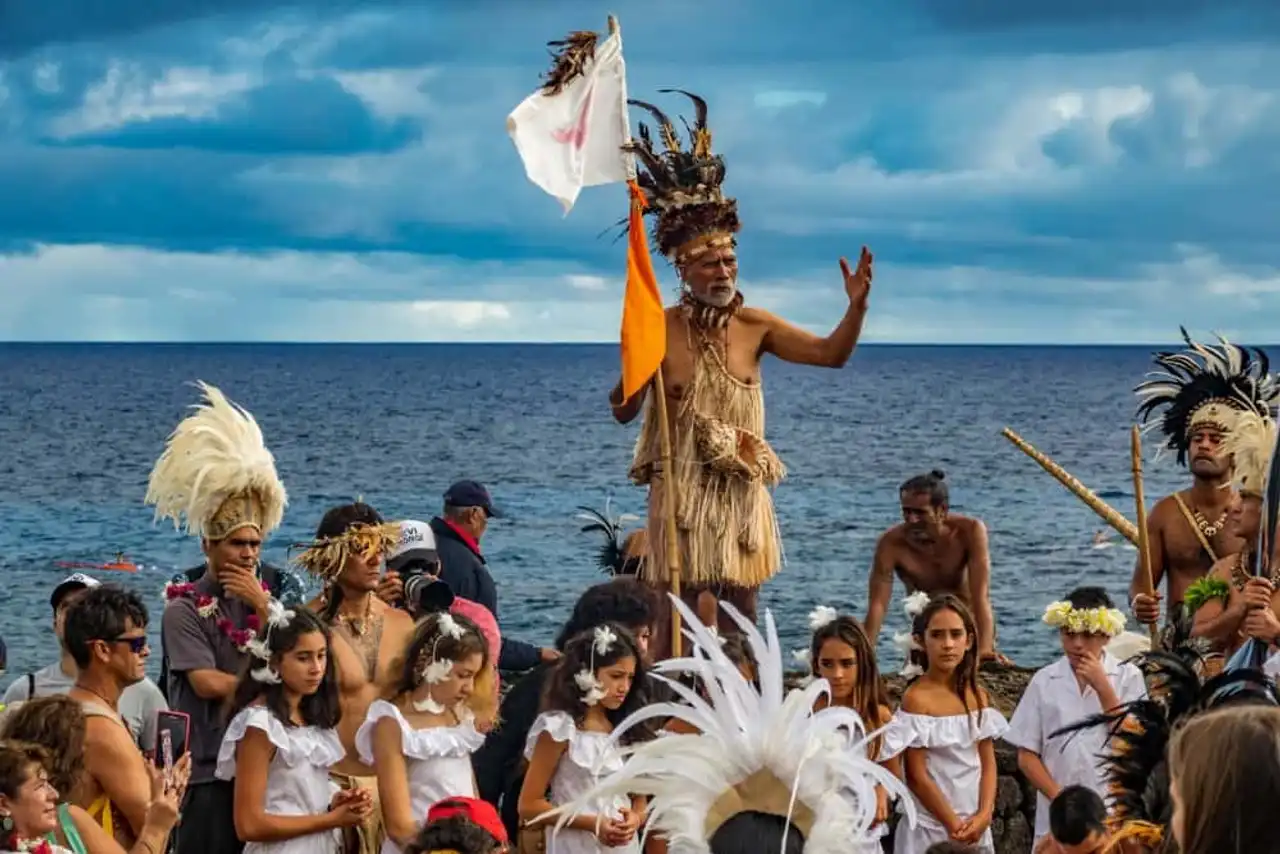
Head of Rapa Nui giving a speech – Find Easter Island Photo credit: Shutterstock – FCG
Imagine. De courageous adventurers slipping on the ocean aboard their canoe, relying on the stars to find their way and able to catch some bare hands to survive. Thus, in the 8th and 13th centuries, the islanders from Marquises , from Mangareva, Cook Islands and Pitcairn landed on Easter Island. So they made Rapa Nui the land of the Ahu and the Moai.
In the 17th century, the number of inhabitants reached its paroxysm: 15,000 souls. Then the wars between tribes broke out. The issue? The appropriation of land and natural resources.
Following the arrival of Europeans, the introduction of species that upset the ecosystem, slavery, the colonization by Peruvians, the intensive breeding of sheep and deforestation.
Above this chaos, new clan wars on the background of bloody murders and cannibalism. In a few years, the Pascuans were almost scattered. So much so that today, few are the families whose genealogical trees draw their roots from the island. Most islanders have ancestors from Europe or South America.
The Pascuans were not the only victims of the enlivened history of Easter Island. Many of the Moai were overthrown during the clan wars, foreign invasions and economic upheavals. Historians suspect that those who survived these assaults were destroyed by the earthquakes. Thus, all the moai still standing are actually from a restoration in the twentieth century.
Do you know that stone monoliths embody a custom come straight from Polynesia ? Archaeological consensus is reached to consider these statues as divine ancestor figures. Turning their back to the sea, they protect from their benevolent eyes, the territory of their breeders. 95% of these stone giants come from the sacred volcano of the Rano Rataku which, according to the beliefs, diffuses all its power in the island.
In 1888, Chile definitively annexed the island of Easter. At that time, the few 5,000 inhabitants of Pascuans (including 1,500 natives of the island) received little rights and consideration from the government. The Rapa Nui "pure strain" were mostly hidden in 6% of their territory. They had to wait for 1966 to benefit from Chilean nationality and that disenclavement begins.
Today, Easter Island enjoys the title of “ territorio especial”, which gives people greater autonomy. But we’re not talking about independence and even less financial. Rapa Nui regularly revolts against injustices and exploitation of their lands by the government.
Then, out of the question of putting everything on tourism to boost their economy and get out of the cup of Chile. The massive advent of visitors could upset the delicate balance of traditions, fauna and flora. Thus, the number of travellers who can crowd the island is restricted and even the “Contis” who come to work on the island are considered disturbing. However, the Pascuans "pure strain" hope to be able, one day, to fully regain power on their lands, archaeological sites and the protected marine park that will replenish their island.
Art and cuisine
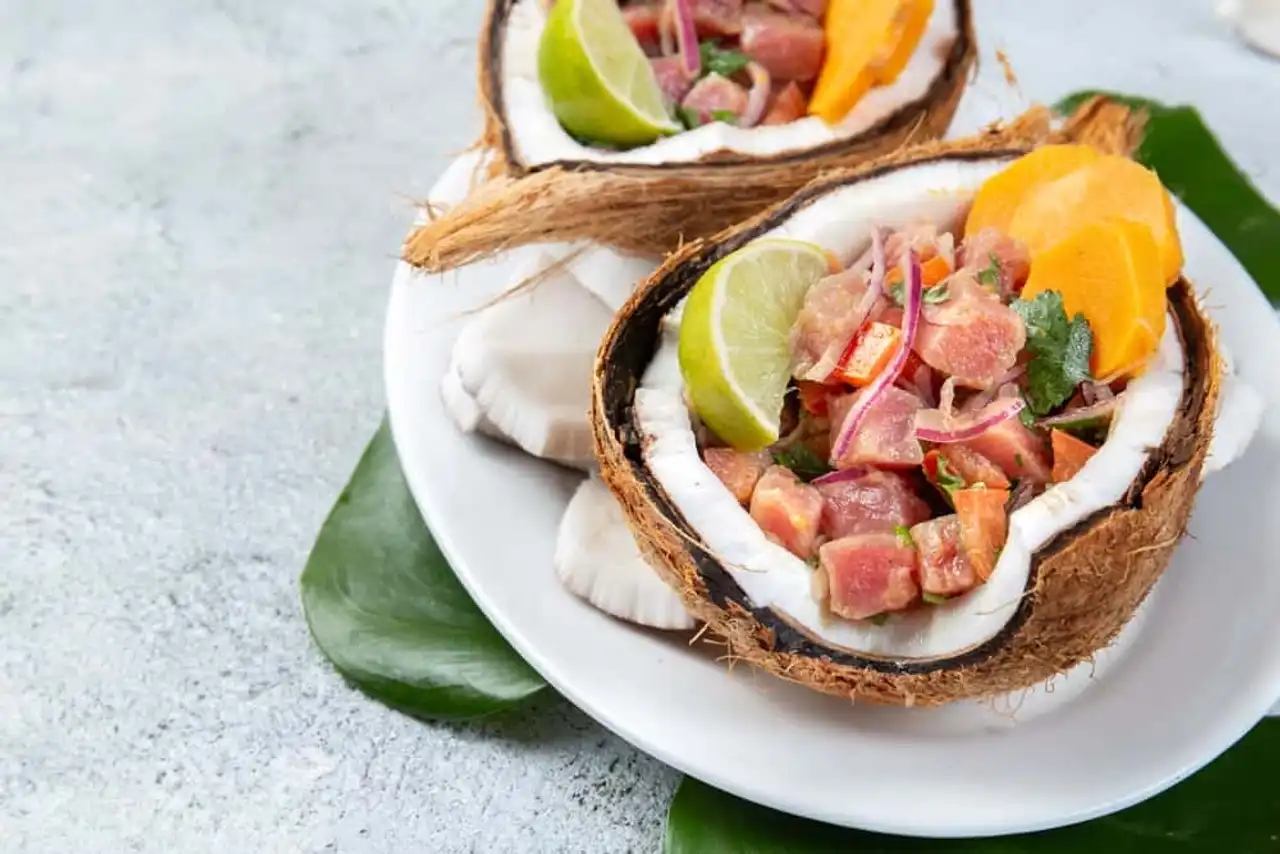
Find Fresh Fish Ceviche – Easter Island Photo credit: Shutterstock – Larisa Blinova
Rapa Nui is quite conservative, placing the family, religion, marriage and children at the centre of concern. So few families of the first people remain, the Europeans and Chileans who arrived on the island have largely impregnated ancestral traditions. Today, culture is characterized by a superposition of Latin and Polynesian traditions. Dance, engraving and tattoo are the most representative arts of the island.
Easter Island is sensational. In all senses of the term. All our senses are filled, including our taste buds! During our adventure in the countries of the Moai, we had the pleasure to taste a fine and comforting gastronomy.
It is impossible to count the number of melting empanadas engulfed in delicious unpretentious restaurants. We also did an extra-fresh seafood treatment. Grilled pepper with papaya chutney, acidulated ceviche, tasty tuna paved with the sound of the waves that crash on the coast or again Jaiva Chupe (Crab free).
At the Chilean table, we also met with famous simmered dishes, including meat parmenter and higher foods (the merken , sort of mapuche mixture based on spices, or aji chileno , creamy sauce with pepper).
As good living and regional products enthusiasts, we did not miss filling our suitcases with tasty Chilean foods. Our loved ones are witness to this: the grapes’ water-life, the very fragrant honey and the jam of berries are gustative wonders.
Hanga Roa: one island, one city
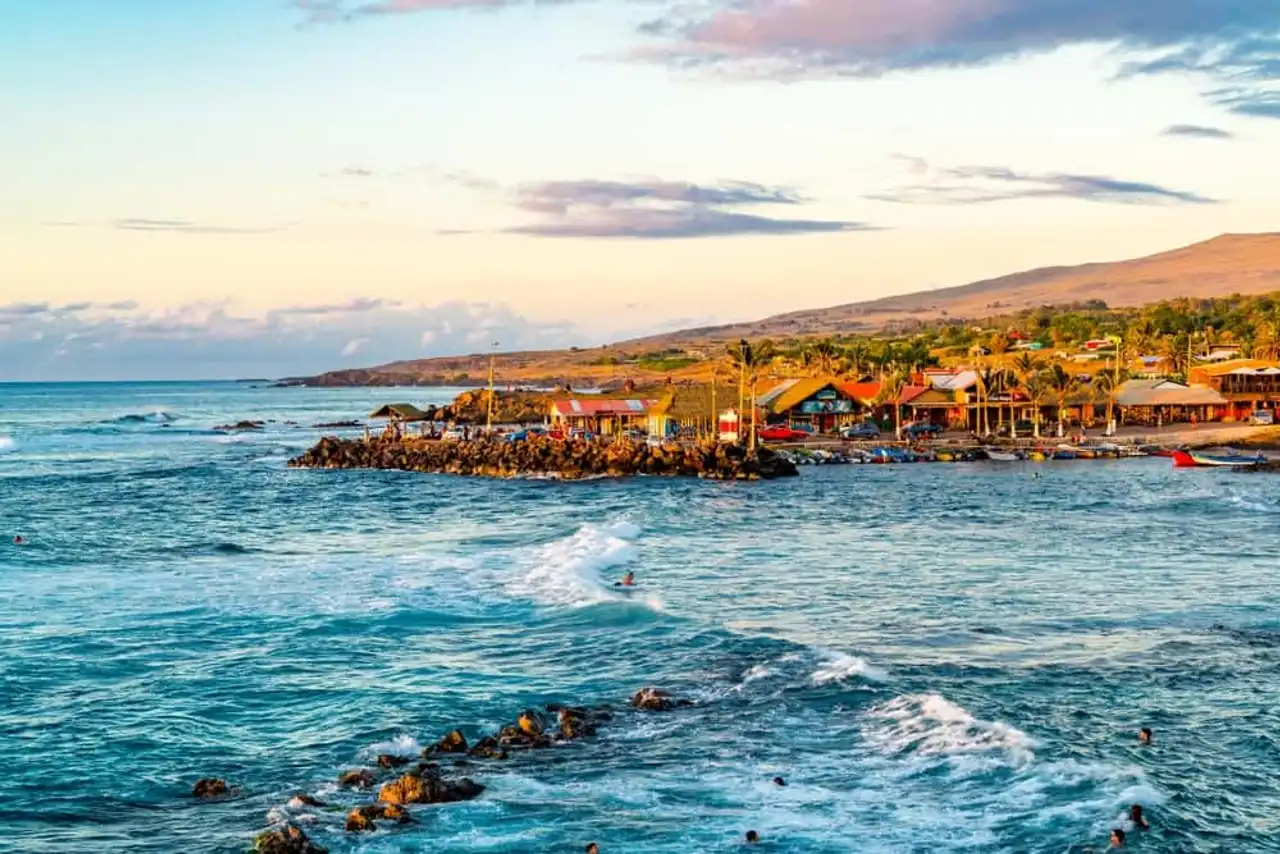
Find Hanga Roa Village – Easter Island Photo credit: Shutterstock – takepicsforfun
Like many travellers who land on Easter Island, we did not pass next to the only city of the islet: Hanga Roa. Unsurprisingly, there is the widest range of restaurants, cafes, hotels and shops. Preservation of the environment requires, these installations have not denatured anything in this part of the world, preserved costs. Hanga Roa also houses a charming small fishing port, and a beach that attracts surfers with stiff hair and some interesting archaeological sites.
Barely landed in the small town, entrance door to the rest of the National Park, we jump towards Ahu Tahai. This extremely photogenic site gathers three Ahus. The Ahu are burials and ceremonial centers that were initially in the heart of the villages. We were whispered that their origin comes from French Polynesia.
These stone platforms, with flat stone roofs, are egregated throughout the coastline. The most impressive Ahu support the Moai Monuments. It is impossible to remain indifferent to a first encounter with these colossal statues. At the heart of Ahu Tahai’s site is a solitary moai. Further north, a carved moai with its imposing red head cover. On the other hand, five other statues adjoining several traditional houses in the form of a reverse canoe. We are quickly taught that these charming foundations are called Hare Paenga.
Moaï, still, are not always photogenic according to the time of the day. On the other hand, mastodons resemble fantasmagoric rocks plunged into the dark. So take into account the orientation of the sun to plan your visits.
The next day, we take our neoprene combinations to plunge into the enigmatic and limpid underwater world of Easter Island. Direction the Motu Nui diving site. The particularity of Easter Island? Waters with visibility up to fifty meters deep.
Behind our masks, we exchange some marvelous eyes. Indeed, it is difficult to contain emotion in the face of such sumptuous marine landscapes and intact coral necklaces. The fish, for their part, are desired. But after all, Rapa Nui already has so much to offer, that we forgive him without any problem this lack. When you go up to the surface, you encounter the powerful waves and surfers that give themselves to joy in the crystalline rollers.
If you’re not a nautical sport enthusiast, you’ll be on the road to the footpaths around Hanga Roa. Our heartburn certainly goes to the marked path that leads to the ceremonial village of Orongo. Inscribed in an exceptional landscape painting, it nests at the edge of a crater on one side, and one at-pic plunging into the cobalt ocean on the other. The stacked stone walls and vaulted roofs testify to the way of life in this ancient religious center dedicated to the bird man.
We were lucky to be in Hanga Roa during the Tapati Rapa Nui . This festival takes place during the first two weeks of February. This is the annual flagship event of Easter Island, an authentic traditional feast at the pace of local customs.
The songs rise in the air, the dancers invade the streets, the craftsmen expose their most beautiful works and the clans fight. Who will present the most beautiful Queen of the Festival? The most spectacular contest, however, remains the Hala Pei: men wear their sled and derive, at 70 km/h, the slopes of the Cerro Pui.
Key time also allows us to admire the Tau’a Rapa Nui ceremony. This contest takes place in the magical setting of the Rano Raraku crater. The participants climb in their canoe in roses and fight like floating warriors. Then they put pounds of bananas on their shoulders and plunge into the deep blue lake to start in an unbridled race. The last day of the Tapati Rapa Nui festival marks the organ of the festivities. The city is surrounded by coloured carvings and costume characters.
Le Parque Nacional Rapa Nui
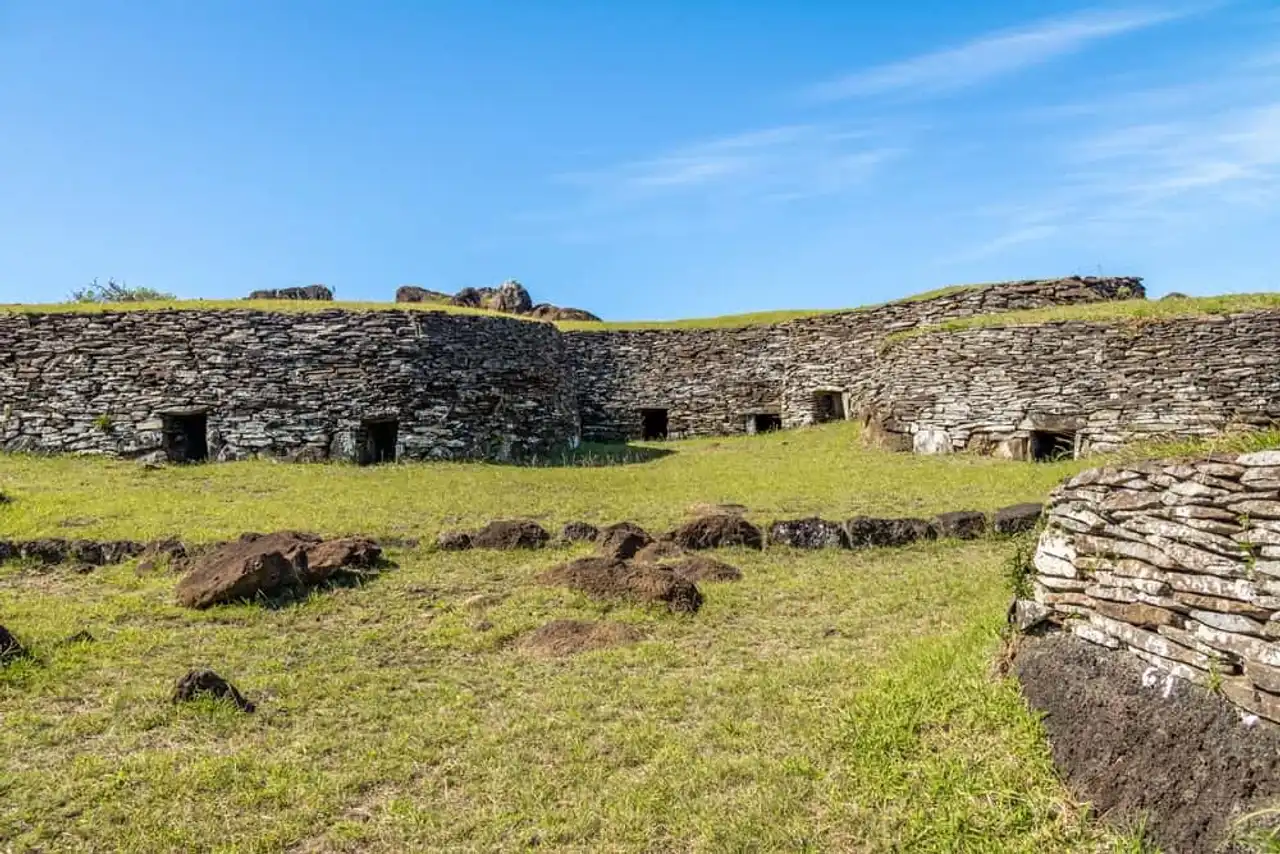
Find Orongo Village Snows – Easter Island |MISUMI Photo credit: Shutterstock – Diego Grandi
We then continued with the exploration of the rest of the territory, classified as a whole National Park. To go freely, we opted for car rental. This means of transport offers great freedom and the possibility to leave far behind other tourists. The program? Caves, horse rides, Ahu, moai, remains of villages and other pieces of archaeological sites.
You also have the opportunity to rent a bike on Easter Island. However, although the island is relatively flat, there are still strong “false dishes”. Otherwise, some agencies offer renting scooters, with a motorcycle license only.
The north circuit brings us sepultures in volcanoes. We then encounter some unbelievable moai turned towards the fertile plains, overlooking the remains of the village. The opportunity to learn, moreover, the astronomical meanings of these great statues.
In the southeast, where the ceremonial village of Orongo is located, we also found large caves dug into the ebony cliffs.
In the northeast, fondus of farniente and beach will find their happiness. On our side, we put on our jerseys, towels and tubas to enjoy the view worthy of a postcard. Anakena, the only beach on the island, is a dream place for a small nap under the palm trees.
The meadows with this beautiful beach (at the Ahu Nau Nau) will not fail to attract your attention with their red head covers called Pukao. These cylindrical red hairs, carved in volcanic stone, weigh several tons and are characteristic of some male moai. The Pukao were extracted from the bloody rocks of the Puna Pau volcano. Near the site you will find some abandoned hats of more than ten tons.
Through our exploration, we discover the sites of Rano Raraku (without the costume he wears during the Rapa Nui festival) and Ahu Tongariki. The first is the career of Tuf from which the moai originates. As soon as we enter this nursery, we imagine the first Pascuans sculpting the amazing mastodon. A hard work that escapes any logic.
We discover the exquisite corpses of several moai who still live on the site. Even lying or broken, these huge statues are striking. And again, we haven’t seen anything! The show is even more bluffing in Ahu Tongariki: the largest ceremonial centre on Easter Island. No less than fifteen giant monoliths would entice us of their benevolent look. Humility. Sentiment of littleness. Silence...
We are still pushing our exploration towards the Peninsula Poike and its hiking trails. We dream of discovering the caves covered with petroglyphs and the volcanic cones of the saler.
In this region, nothing better than a horse ride to immerse yourself in the beauty of the places and live intensely the discovery of each place. In fact, the riders should not miss an equestrian hike on the sides of the sleeping volcano of Maunga Terevaka. If you love the mysterious atmosphere of the caves, Ana Kai Tangata will make your happiness. Despite the time that passes and ravages, there are still some religious paintings.
We do not miss the archaeological and astonishing site of Akivi. Here, the grass field is found by seven moai that are exceptionally turned towards the ocean. They have the gaze fixed towards sunset during the spring equinox. A site where you can enjoy all the splendor in the golden hours of sunset.
Before returning to the plane, we end with the museum of the island. The place, called the Anthropological Museum of Father Sebastien-Englert, is a must to fully understand the history of Rapa Nui. The museum retains many vestiges as well as the only moai identified as female.
Two things you didn't know about me
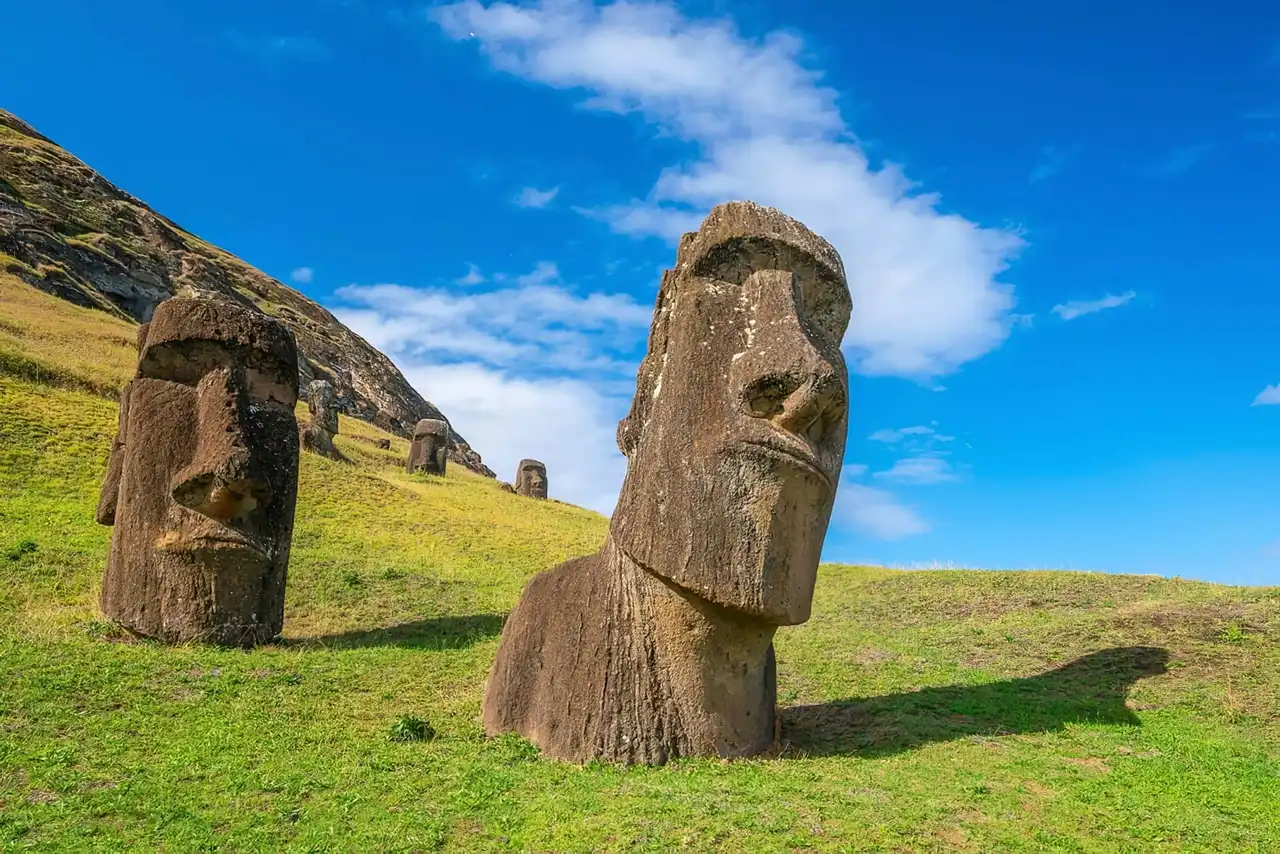
Find The famous Moai statues – Easter Island Photo credit: Shutterstock – f11photo
Were they displaced the days of rain thanks to the mud that facilitates the slipping of stones? Did they drive on tree trunks to the Ahu, contributing to the deforestation of the island? Well, no. Thanks to their low centre of gravity and rounded base, the moai were moved by the Pascuans as culbutos. Well, that wasn't supposed to be simple. Who knows, maybe you'd like to try?
In 2019, researchers highlighted the fact that Ahu were built near underground drinking water sources. That is, on the edge of the island. The rare Ahu located inside the land are at the elbow with caves where groundwater occasionally splashed.
According to them, the monoliths were not there to mark the position of the water points but rather to symbolize the "control catch" on this element that symbolized life.
In 2020, however, a thesis came to refute this work. These recent studies tend instead to demonstrate that the exploitation of rock and the construction of the moai allowed for the fertility of soils thus agriculture. Researchers are based on soil studies that, close to the monoliths, are particularly rich in traces of elements such as banana and sweet potatoes.
Moreover, the soil of the Rano Raraku volcano’s career is a testament to an affolating number of ancient cultures. But who tells us that in a few years we will not discover much more? And maybe even realize that so far, we still had everything wrong on the legendary Easter Island moai.
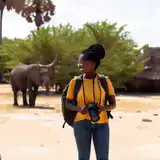



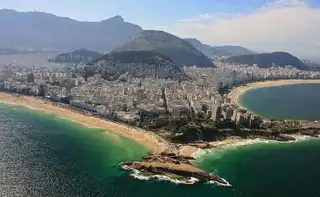
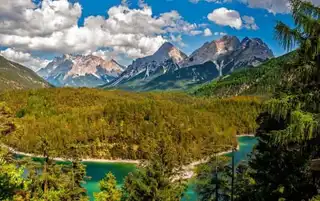
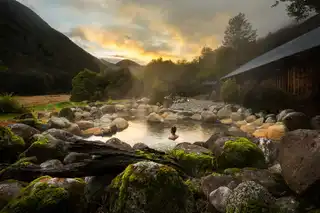
Loading comments ...